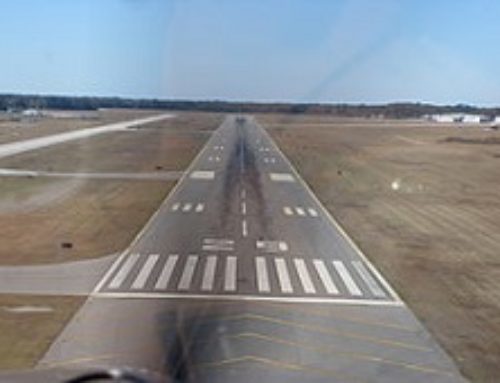RAMS Plus 6.70.00 New release – September 2022 RAMS Plus 6.70.00 is now available for download.
Please login to the support section with your user ID or contact RAMS support for more details.
Release notes:
- Structures using Polygons: Airspace and ground structures can be easily created using a simple polygon-type data structure. This feature is designed for the DroneZone model, and encapsulates three primary benefits: (1) polygon structures can be either avoided or to allowed for specified drones (using criteria and sets) within the structure, (2) flight layers can be defined within the structure, where flight layers are not the same as dedicated flight levels but rather allow drones to fly at any level within a layer, and (3) metrics of drone occupancy over time using the structure crossing output file, similar to the sector crossing and route crossing simulation output files.
- EUROCONTROL BADA Performance Data: ISA Software work closely with EUROCONTROL to help promote a global standard of comparison for ATM fast-time simulation metrics and results that rely on modeling 4D trajectory generation using aircraft performance datasets. For information on using EUROCONTROL BADA3 and BADA4 performance data within RAMS Plus, see the RAMS Plus User Manual 6.70.
- Sets: Sets are used to define multiple objects, and can contain objects, patterns, other sets, and ac-ceptance criteria. A set’s condition may be a logical OR, AND, ORDERED AND, NOR, and NAND. Sets can replace static data elements in many of the RAMS Plus data elements.
- Acceptance Criteria Data Element: The familiar Acceptance Criteria data element used by airport gates, ground links, departure queues, runways, airway routes, restricted zones, and approach/departure routes is now a separate data object that can be defined and re-used by many objects. The multiple inputfiles for each data object’s acceptance criteria are now consolidated into a single file. For example, for an airport gate, the acceptance criteria used up to five inputfiles GATEAIRLINE, GA-TEACGROUP, GATEEQUIPMENT, GATECATEGORY, and GATEMODEL, which are now converted into the ACCEPTCRITERIA datafile, and then the gate is assigned an acceptance criteria with the new GATEACCEPT data file. This conversion is performed automatically when opening a scenario with RAMS Plus version 6.70, and the scenario file will then not be backwards-compatible with previous RAMS Plus versions.
- Acceptance Criteria now include sets (and sets can include acceptance criteria). Therefore, any modeling element within RAMS Plus that uses either a set or acceptance criteria can therefore be defined to be any combination of objects. Conceptually, the acceptance criteria data definition is simply a sub-set of the range of a set’s data definition. Both sets and acceptance criteria data objects offer a similar method to obtain similar functionality, where it is a user-preference on how to define these data.
- Airspace Grids: Airspace grids are uncontrolled (e.g. no controller conflict detection or resolution functionality) airspace volumes that can be used to create complexity metrics. Airspace grids can over-lay sectorised controlled airspace, and use grid indexing for efficient computations.
- Complexity Calculations: Complexity calculations are expanded to airspace sectors and airspace grids, and are therefore no longer restricted to Multi-Sector Planner (MSP) objects. Complexity calculations also have enhanced factors for closest-point-of-approach and convergence rates, and also report the instantaneous count, minimum, and average for each of these factors.
- Flow Airspace Restrictions: Flow airspace restrictions enable flows to be defined using airports and upstream and downstream objects such as navaids, routes, and sectors. This removes the extensive data requirement of defining restrictions by segment, which then requires ensuring the traffic schedule uses these segments. If a flight is determined to be on a flow, the flow’s restriction is applied within a de-fined airspace volume or between any two flight events. The restrictions are altitude and speed restrictions.
- Flow Airspace Segment Restrictions Flow airspace segments use the flow airspace restriction concept of flows to define restrictions on one or two navaids (two navaids = a segment). The segments are applied in direct (DCT), free-route area (FRA), or general Route Availability Document (RAD) opera-tions, where the segment is either forbidden, reserved, or compulsory depending on the DCT, FRA, or RAD operation. These segments are primarily used for NEST/DDR rule imports, however they can be applied to any navaid situation.
- Workload Relationships Using Sets: Workload relationships allow extensive rulebased IF/AND conditions to be defined for a task trigger. This flexible feature is even further enhanced by the incorporation of sets to be included in the relationship’s object definitions. For example, sets of airports or sets of sectors can be defined to be included in the task relationship definition.
- EUROCONTROL DDR/NEST Data Import: NEST data can be imported into RAMS Plus formats, including airspace, free route areas (FRA), traffic, and rules. Contact ramssupport@isa-software.com for more information.
- Free Route Airspace (FRA): Free Route Airspace (FRA) following European FRA data constructs, introduces its first implementation within RAMS Plus. Contact ramssupport@isa-software.com for more information.
- Graphics: Restricted Zone & Gird Analysis Tool: To complement the Airspace Analysis Tool, which illustrates 3D sectorised airspace, there are two additional tools, the Restricted Zone Analysis Tool and the Airspace Grid Analysis Tool, to illustrate 3D restricted zone volumes and airspace grids respectively.
- Simulation Outputs:
- Altitude Output in Meters or Feet: Recording aircraft altitude in optional feet or meters, in addition to the default 100’s of feet, are now options in the simulation outputs and in the Traffic Dialog’s Write 4D Profiles.
- Holdstack Events: Holdstack event log contains events that occur internal to holdstack operations.
- Airspace KML Files: Airspace is automatically output in various formats upon loading a RAMS Plus scenario.
- Graphics: Animation Aircraft Shapes: Aircraft shapes can now be built from multiple polygons, where the multiple polygons have options for a (x, y) translation offset, rotate/spin, color, and fill-style (solid, clear, cross-hatch).
- Graphics: Define your own Menu Favorites: Create your own menu favorites for short-cuts to the most-used menu options. Menu favorites are added between the View and the Tool on the menubar.
For the complete release enhancements, see the RAMS Plus User Manual 6.70’s Release Notes.







